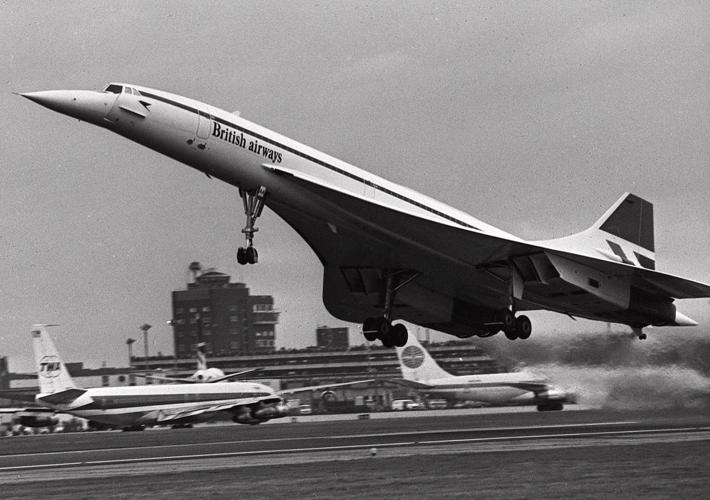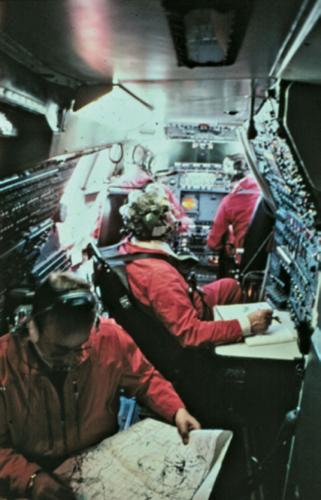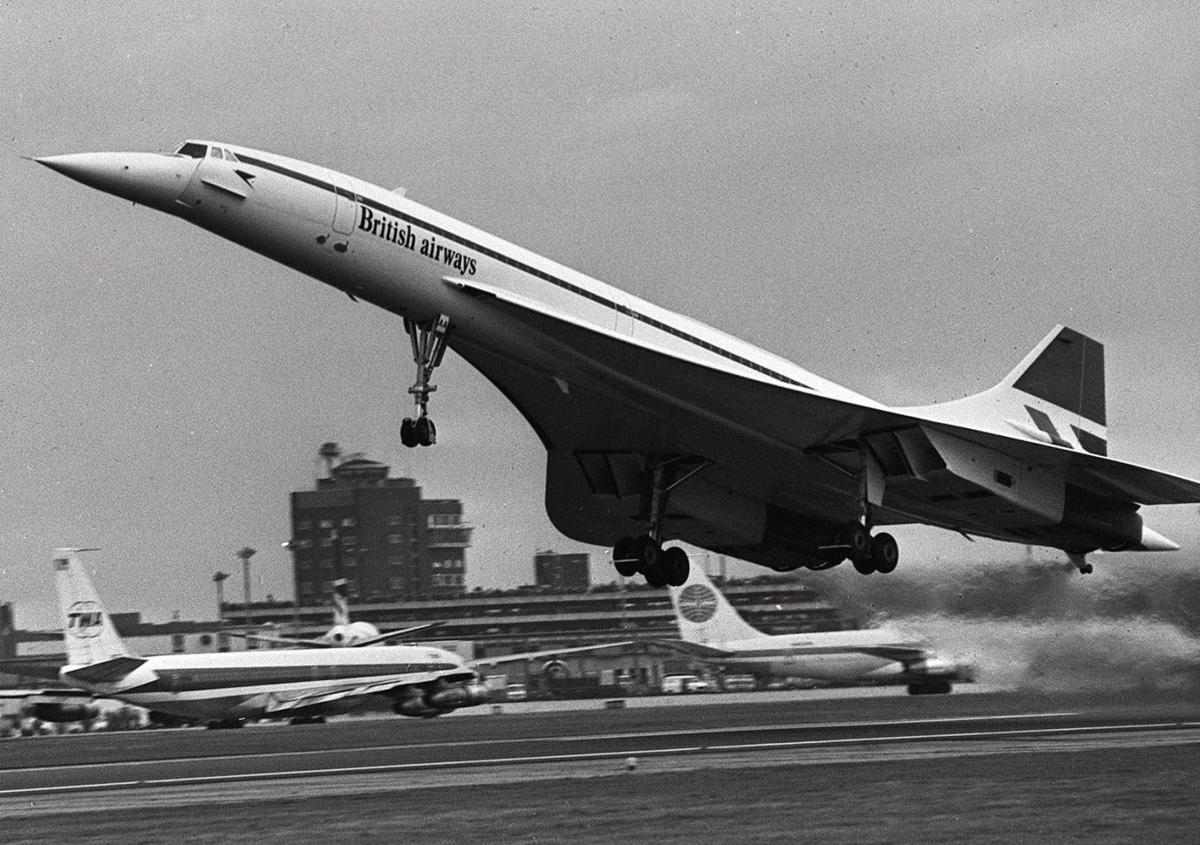No matter how amazing your plans might be for Monday’s total solar eclipse over North America, you’ll never top what Kitt Peak astronomer Don Hall got to do just over 50 years ago.
On June 30, 1973, Hall was part of a select group of scientists that chased a total eclipse across Northern Africa on board a specially equipped prototype of the Concorde, the world’s only supersonic passenger jet.

Astronomers Pierre Léna, left, and Don Hall pose together in Paris in 2012. The two met in the late 1960s at Kitt Peak National Observatory and later took part in a famous mission to study the sun from a supersonic jet during an eclipse over Africa on June 30, 1973.
By keeping pace with the shadow of the moon at roughly twice the speed of sound, the science team managed to extend the length of the eclipse to an astounding 74 minutes. That’s nearly 10 times longer than the maximum possible duration of a total eclipse viewed from the ground.
By comparison, Monday’s eclipse will last a little under 4 minutes and 30 seconds when it reaches its peak over Central Mexico. Most places along its path from Mazatlan, Mexico to Maine will experience less than 4 minutes of eerie midday twilight as the moon blocks out the sun.
A team of solar researchers hopes to stretch totality to about 6 minutes using a Gulfstream V research jet that is scheduled to take off from Tucson Monday morning and rendezvous with the moon’s shadow over Texas at about 500 mph and an altitude of 47,000 feet.
The 1973 eclipse was already one of the longest of the 20th century, with a peak totality of just over 7 minutes.
But that wasn’t enough for French astrophysicist Pierre Léna, who arranged the audacious supersonic flight on the first Concorde prototype to give him and his fellow researchers plenty of time to collect infrared and other data on the sun’s corona and chromosphere.
“The idea was quite a natural one,” Léna, now 86, said Friday by email from France. “I had been doing airborne astronomy since 1968 — first at NASA, then in France — and was prepared.”

The view from the window of a research jet flying at 55,000 feet during a flight though a total solar eclipse over Africa on June 30, 1973.
It was also quite natural for him to invite Hall to “share this adventure,” he said.
Léna met the Australia-born solar astronomer at Kitt Peak National Observatory in the late 1960s, when the two of them worked together at the observatory about 50 miles southwest of Tucson.
“I got to know Don, as we were both working on the entirely new field, at that time, of infrared astronomy,” said Léna, now a professor emeritus at Paris Cité University and the Paris Observatory. “We developed a long-lasting friendship.”
Léna left Kitt Peak in 1968, but he returned for a visit four years later to recruit his friend for the 1973 eclipse. It was the perfect opportunity for Hall to try out “the infrared techniques he was mastering and pioneering,” Léna said.
Astronomer Donald Liebenberg from Los Alamos National Laboratory in New Mexico also joined the mission, as did researchers from France and the United Kingdom.
The aircraft, known as SST-001, was modified with four rooftop portholes and loaded with observation equipment. It took off from the Canary Islands and raced across Africa at an altitude of 55,000 feet, matching speed with the eclipse as it crossed the continent near the Tropic of Cancer.
The eight scientists on board could look out the window and see the moon’s shadow as it moved over savannah and the Sahara Desert. It was midday, but the jet had to activate its night-time navigation lights during its 74 minutes in the dark.
The sun was beginning to reemerge from behind the moon when the aircraft and the eclipse finally parted company over Central Africa.
SST-001 and its crew landed safely in the capital city of Chad, where, just hours earlier, the government had survived an attempted coup.
The record-breaking flight lasted almost exactly 3 hours and reached a top speed of 1,232 mph. Enough scientific data was gathered to produce three papers published in the journal Nature.
Upon the aircraft’s return to France, Léna said, Hall fell ill with “a terrible ‘African’ fever.” The Kitt Peak astronomer would spend more than a week in the hospital and lose about 20 pounds before finally recovering.
After his health scare, Hall joined Léna and his family in Eastern France for some much needed rest and relaxation before making his way back to Tucson.
He would go on to take part in other eclipse flights, including one over the Indian Ocean in 1980 in an aircraft operated by the U.S. Air Force.
He and Léna remained friends until 2020, when Hall died at the age of 75.
In 2013, the two astronomers and their fellow eclipse chasers met in Paris for the 40th anniversary of their famous flight. The reunion took place at France’s Air and Space Museum, where the Concorde prototype remains on display.

Crew members work in the cockpit of the first prototype Concorde supersonic jetliner as it chases a total solar eclipse across Africa on June 30, 1973.
The following year, Léna finally published his definitive account of the 1973 mission — in French, of course. An English version, called “Racing the Moon’s Shadow with Concorde 001,” was released in 2015 and is still available in paperback and as an e-book.
In it, he describes the historic chase like this: “No man had ever seen the sun eclipsed for such a long time, no flight crew had ever carried out such a difficult encounter so faultlessly, no plane had ever provided such a fine observatory for its team of awestruck astronomers.”
Now more than 50 years on, Léna writes, “this record remains unbeaten.”
The research flight will study the sun's corona from inside the moon's shadow on April 8.








